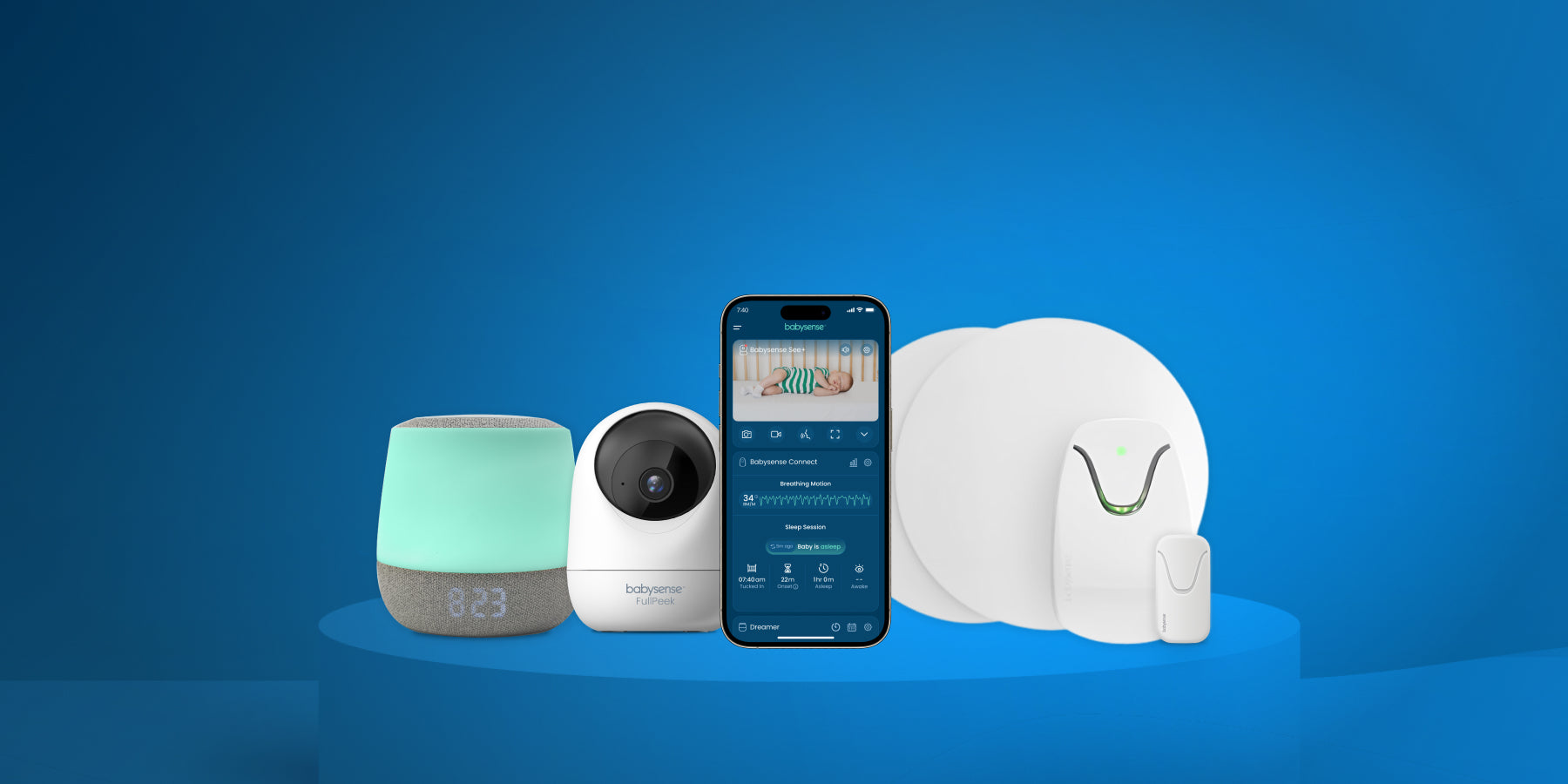As a new parent, nothing is more stressful than getting your little bundle of joy to sleep. Sure, you will get tons of advice from friends and family on how to do this, but the information might be conflicting because everyone goes through a different experience when raising a child.
The question is, do you let your baby sleep on his (or her) back? Or is sleeping on the stomach better? And when is the right time to let your baby sleep tummy down?
The primary reason for concern with this issue is Sudden Infant Death Syndrome (SIDS), the most common cause of death for babies between one month and one year old.
Also known as cot or crib death, SIDS is a silent medical disorder that might occur as a baby sleeps. It does not have any symptoms and can hit babies who seem healthy, so you won’t see it coming.
The chances of SIDS happening are much higher if your baby has physical or health problems, so such cases require special attention to ensure they sleep the right way.
You might be wondering how SIDS and sleeping tummy down connect. Let’s get right into it and explore the answer to “when can babies sleep on their stomach.”
History of Sleeping Positions For Babies
Although the cause of SIDS is unknown, the risk factors are known, and the most significant one is laying a baby to sleep on their stomach.
Sudden unexplained infant deaths increased rapidly in the 20th century, which led to thorough investigations into the issue.
In 1944, Abramson, a New York-based pathologist, discovered that about 66% of infants who died from mechanical suffocation while sleeping were lying face down. Reports in Australia and the UK corroborated his findings, leading to a promotional campaign advising parents to avoid putting their infants to sleep in the front position.
However, a pediatrician named Woodley rejected Abramson’s observations a year later based on his experiments. Later, alternative explanations to the causes of death emerged, further denting Abramson’s hypothesis.
The matter remained under research for most of the 60s, 70s, 80s, and 90s in what turned out to be SIDS later on. It was not until the late 80s that scientists recommended putting babies in the supine position when putting them to sleep to minimize the risk of SIDS.
The first official text to advise against sleeping on the stomach came out in 1992, and evidence linking it to SIDS has been growing ever since.
Eventually, health bodies like the American Academy of Pediatrics (AAP) came on board, supported the research recommending sleeping in a back position, and released a policy statement stating the recommended sleeping positions.
Official Recommendations For Safe Sleeping
The updated 2016 AAP policy statement lists recommendations to help reduce the risk of sleep-related infant deaths, including SIDS. Apart from placing them in the back position when sleeping, they advise the following:
- Placing your baby on a firm resting surface
- Avoid soft mattresses (including memory foam), pillows, sheepskins, quilts, etc.
- Use a crib or bassinet that conforms to the Consumer Product Safety Commission (CPSC) safety standards
- Avoid putting your baby to sleep in a stroller, car seat, swing, and any other sitting devices
- Ensure the crib is hazard-free (away from hanging cords, power cables, etc.)
- Keep the baby in your room but not in your bed (to reduce the risk of suffocation)
The policy statement list is extensive, giving close to 20 recommendations while explaining them in detail.
So, When Can Babies Sleep on Their Stomach?
Of course, you cannot keep your child sleeping in a back position forever. We recommend implementing these recommendations for a year because the risk of SIDS occurring after that period drops significantly.
However, this is easier said than done. It is easy to control the sleeping position of newborns because they will stay the same way you put them to sleep (on their back) without moving.
After about four months, though, babies develop some muscles and can roll over while sleeping. It explains why most SIDS deaths occur between the ages of one to four months, and the majority happen before six months of age.
What does this mean? You might have to lose some sleep at night to keep an eye on your child and turn him (or her) if in the wrong position. However, after a year, you can leave your baby to sleep on any side that feels comfortable. You can even add a light blanket to the crib.
Reasoning Behind the One Year Waiting Period
The research and recommendations are pretty solid. Approximately 3500 children under a year of age die each year in the US. According to a 2017 CDC report, 1363 deaths occurred due to SIDS.
Even though it seems like a high number, this mortality rate is significantly lower than the numbers reported in the 90s. Back then, there were roughly 130 deaths per 100,000 live births, but in 2017, the statistic was only about 35 deaths per the same number of births.
Remember, the first official communication to advise parents on safe sleeping for infants came out in the 90s, and there has been continued research and campaigns on the matter ever since.
Because of these actions, the deaths have gone down significantly, proving that children under a year of age are more likely to die from SIDS if left to sleep on their stomachs.
That said, researchers still haven’t figured out why sleeping on the belly increases the risk of SIDS, but some studies suggest it can cause upper airway problems, such as obstruction.
Obstruction causes babies to breathe the air they exhaled, which increases carbon dioxide while reducing oxygen levels. Breathing out also releases excess body heat, so obstruction can cause overheating. High body temperature is another SIDS risk factor.
It might also cause a sudden drop in the heart rate and blood pressure.
What If Your Baby Turns Stomach Down Before the Recommended Age?
Though risky, sleeping on the belly has its benefits. For instance, it causes extended periods of deep sleep, which means your baby will rest better and be less reactive to noise. Kind of what parents dream of, right?
So, what if your baby rolls face down while still under a year of age? It is a common occurrence from around 4 to 6 months and is an indicator of healthy growth because it shows the neck, arm, back, and leg muscles are developing.
As such, the more they roll over, the stronger they are. Such movements are permissible, and you can even help them develop by placing them on their tummy for a few minutes.
However, only do this when you are close by to supervise your child. Issues might arise, such as burying their faces into the mattress, causing difficulty in breathing.
Generally, it is safer if your kid is strong enough to roll over consistently in either direction before leaving them to sleep in their preferred position. They will be able to reposition themselves quickly if complications arise during sleep.
If your baby cannot do this, then you need to remain alert the entire time to ensure they sleep in the supine position.
Thus, it might be okay for some infants to sleep tummy down before turning a year old (if they are strong enough). For the rest, the safe way is to get light sleep frequently while on their backs.
What If Your Infant Only Sleeps Tummy Down?
Some babies are a piece of work and will keep you awake all night unless they are in their favorite sleeping position, stomach down. However, there are several ways to trick your child into getting quality deep sleep even when placed on their backs. You can try:
Swaddling
Swaddling is one of the best ways to promote sleep as the snug blanket wrapping mimics the tight quarters the child was used to in the womb.
However, swaddling has its limitations. You should stop using this technique as soon as the baby shows signs of rolling, which happens from 4 to 6 months old. If not, the blanket will confine movements, which will limit muscle growth and delay growth milestones.
Sleepsacks, wearable blankets, and other sleep clothing for infants are also perfect for this tight wrapping, so buy a few for the first few months.
Using White Noise
Surprisingly, rough and rumbly white noise has a calming effect on babies because it recreates the sounds that commonly occur in the womb. According to pediatrician Dr. Harvey Karp, this noise should settle your child within 30 seconds.
Our video baby monitors let you play white noise and lullabies to help your little one settle.
Frequent Feeding
Regular breastfeeding helps too. In the womb, babies get fed by the mother’s body every time they require it. After birth, they need a similar feeding schedule to be comfortable and sustain growth.
Since they wake up almost every one or two hours, breastfeed your baby 10 to 12 times a day, and if bottle feeding, do it around eight times daily.
If you do the math, the schedule gives you about two hours of uninterrupted sleep in the first few months. Gradually, this will increase to five, six, or seven hours by the third or fourth month.
Dream Feeding
If your baby wakes you up at night, it is usually due to hunger, and breastfeeding will settle everything. However, this might interrupt your sleep and severely affect you if it goes on for days.
A neat trick to help out in such a situation is dream feeding. For early sleeping babies, you can wake them from around 10 pm to 11 pm for breastfeeding one more time before you call it a night.
These extra calories will provide the required energy to burn through the night while keeping the tummy from rumbling. In most cases, the child will end up getting hungry during reasonable morning hours, leaving you with a long, peaceful night.
Remember, the goal is to get your child to sleep for long periods in the supine position, and the above methods help promote deep, uninterrupted sleep.
Is There a Risk of Plagiocephaly?
Also known as the flat head syndrome, Plagiocephaly is a common disorder in babies who sleep on their backs. Their skulls are soft after birth, and placing them in the same position for a long time might cause one spot to flatten.
The condition occurs more frequently in premature infants because their skulls are highly pliable.
Plagiocephaly should not worry you, though, because it is not painful and won’t affect your child’s life or abilities.
What’s more, it is treatable by using a corrective headband, molded helmet, or molded cups to reshape the skull. Your baby will not need any surgery.
Special exercises can also help restore the shape of the skull, but you can avoid all these treatments by varying your baby’s sleeping positions.
Lay your child with their head on one end of the mattress, then flip your baby over the next night (with their body facing the other end). If you keep your baby’s face looking into the room, the skull will experience some pressure on alternating sides each night, which reduces the chances of Plagiocephaly.
What About Sleeping on the Side?
Sleeping on the side is just as risky as sleeping on the tummy because it is easy to roll over on either side, including the belly. By now, you know the dangers of sleeping on the stomach, so this is a no-no.
Conclusion
So, when can babies sleep on their stomachs? It is safer to put kids under the age of 12 months to sleep on their backs to minimize the chances of SIDS occurring. While this can be difficult and interrupt your sleeping pattern, it is necessary, especially after your child develops enough muscles to roll over.
However, you can use various methods like frequent breastfeeding to promote deep sleep in the supine position, at least for the first few months. The first year might be the toughest, but you can let loose after that.





